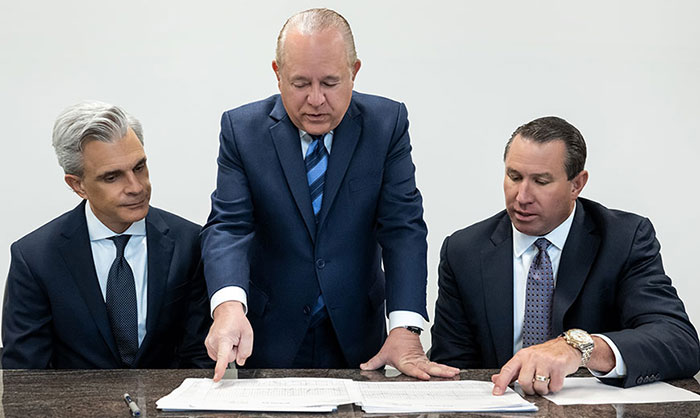What Is Neonatal Resuscitation?
Actions Taken in the First Minutes of a Baby’s Life Matter
Birth is a time of transition and adaptation for babies. They move from an environment where the mother provides oxygen and nutrients through an umbilical cord to a world where oxygen is obtained through lung breathing by the baby.

But at least 10% of newborns need help with respiration and breathing in the moments and hours after they are born. About 1% of newborns need extensive
neonatal resuscitation to avoid or minimize birth-related brain injuries, including hypoxic-ischemic encephalopathy (HIE).
The doctors (including neonatologists and pediatricians), nurses, midwives, and hospital staff caring for newborn infants have a duty to provide immediate resuscitation when babies are not able to get adequate oxygen. However, preparing for this critical duty begins long before a mother goes into labor.
Anticipating the Need for Neonatal Resuscitation
Preparing for potential resuscitative efforts involves two very important areas:
- Identifying women whose babies might be at risk for reduced oxygen during childbirth, and
- Assembling a team of trained professionals and the equipment needed to resuscitate a newborn.
An expectant mother’s doctors should monitor mom and baby throughout her pregnancy. Some women may have medical conditions that make labor complications more likely. Also, doctors should notice any signs that the baby is not growing as expected and other concerning symptoms.

As the mother goes into labor, the doctors and hospital must provide trained staff and equipment to perform neonatal resuscitation. This is not the time to search for supplies or page additional people to the delivery room. Babies in fetal distress need help immediately. Any delays increase the risk of severe brain injury, cerebral palsy, cognitive disabilities, seizure disorders, and death.
Preparation is key to successful neonatal resuscitation. Failing to do so could be considered medical negligence and then medical malpractice when babies sustain injuries.

Signs That Neonatal Resuscitation Might Be Necessary
Risks to the mother and baby are sometimes evident during her pregnancy. Other factors arise during labor and delivery. A baby in danger of suffering from reduced oxygen or blood flow is likely to need resuscitation. The medical team caring for mom and baby needs to be aware of these signs and take immediate action.
Some of the common risk factors include:
- Multiples: The mother is expecting two or more babies.
- Gestational age: Premature babies are more likely to need neonatal resuscitation.
- Size of the baby: Very large babies (fetal macrosomia) or underweight (small for gestational age) may need help breathing after birth.
- Maternal medical conditions: Mothers with infections, vaginal bleeding, high blood pressure, cardiovascular disease, obesity, or other serious conditions tend to have high-risk pregnancies that could endanger the baby.
- Labor complications: Prolonged labor places more stress on the mother and baby. Women who are over age 40 are more prone to labor complications. Two other conditions – placental abruption and uterine rupture – endanger both mother and baby.
- Assisted delivery: Babies born by cesarean section or with the aid of forceps or vacuum extractors often need neonatal resuscitation.
Lack of oxygen at birth can cause hypoxic-ischemic encephalopathy (HIE), a severe brain injury. Infants with HIE may face a future of cognitive disabilities, cerebral palsy, developmental delays, and seizures. Medical professionals can often minimize the damage through proper and efficient neonatal resuscitation.
Once a baby is born, doctors and nurses have a specific protocol to follow.
The Neonatal Resuscitation Program
The American Academy of Pediatrics (AAP) developed the Neonatal Resuscitation Program in 1987. This program uses an “evidence-based approach to newborn resuscitation and facilitates effective team-based care for providers who attend to newborns at the time of delivery".
All medical staff involved in a child’s delivery are required to be NRP certified.
When hospitals fail to provide certified staff to assist at births, babies and their families suffer. They may face years of costly medical treatments, medication, therapies, and assistive devices, but compensation may be available when medical malpractice or negligence occurs. An experienced birth injury lawyer can explain the options for filing a birth injury lawsuit.
Interventions, Procedures, and Equipment
Nurses should begin monitoring a woman in labor as soon as she arrives at the hospital. In addition to taking vital signs, they will attach two monitors to the mother’s abdomen:
- One to monitor the mother’s contractions, and
- Another device monitors the fetal heart rate in response to contractions.

If a baby’s heart rate shows signs of fetal distress during labor, doctors should deliver the baby immediately. Assessments to determine whether neonatal resuscitation is required begin in the seconds following the baby’s birth.
As noted above, about 10% of babies need neonatal resuscitation, and 1% need extensive efforts. Doctors and nurses may continue using the following methods:
- Positive-pressure ventilation (PPV),
- Supplementary oxygen administration.

Resuscitation and other treatments depend on the baby’s condition. Doctors and nurses typically start by attempting to clear the baby’s airway by suctioning out any fluid. If the baby responds positively and begins spontaneous breathing, this may be the only intervention needed.
Equipment used for neonatal resuscitation should be available in the delivery room before the baby is born. In addition to standard supplies and equipment, the following items should be available for resuscitation efforts:
- Suction bulbs and mechanical suction devices
- PPV face masks
- endotracheal tubes
- laryngoscopes
- laryngeal mask airways
- supplemental oxygen
- epinephrine
- medications for volume expansion
- pulse oximeter
- pressure transducer and monitor
- cardiotachometer with electrocardiogram oscilloscope
- radiant warming units
Failing to provide the necessary equipment and supplies could cause irreparable harm to the baby.
Steps in Neonatal Resuscitation
The medical team has only seconds to answer the following questions:
- Was the infant born after a full-term gestation?
- Is the amniotic fluid clear of meconium and evidence of infection?
- Is the infant breathing or crying?
- Does the infant have good muscle tone?

If the answer is “yes” to all four questions, then the baby does not need resuscitation. However, they should continue to monitor the baby, especially if they detect signs of fetal distress.
Even if only one question receives a “no” answer, the baby needs some form of neonatal resuscitation. Generally, the team should provide the baby with one or more of the following actions done in sequence:
- Stabilization: They should provide warmth, position the baby to make breathing easier, clear the baby’s airway, stimulate the baby, and reposition if necessary.
- Ventilation: If the baby’s breathing has not improved, the team then provides additional ventilation. For example, they may give supplemental oxygen or PPV.
- Chest compressions: The team may move on to chest compressions if their previous efforts have not worked.
- Medication: Epinephrine can stimulate breathing and heart rate. Other medications help with volume expansion.
Knowing the protocols is only the first step in adequately resuscitating a baby.
Where Medical Professionals Can Go Wrong
Babies in respiratory distress at birth require immediate resuscitation efforts. Doing so might prevent or minimize brain injuries like hypoxic-ischemic encephalopathy (HIE). This condition can lead to cerebral palsy, seizure disorders, developmental delays, and cognitive disabilities.

At every stage, doctors, nurses, and other hospital staff must meet the duty of care they owe to their tiny patients. They should have the proper training and equipment to resuscitate babies in need. These medical providers must be able to identify and manage neonatal respiration treatments immediately.
When doctors and nurses fail to provide proper care, babies and their families suffer. And babies are harmed when hospitals do not ensure their staff are trained and have the right equipment.
Is Your Child’s Birth Injury the Result of Medical Malpractice?
The parents of children who suffered birth injuries often want answers. They want to know what happened to harm their child’s brain. Were there signs of fetal distress that the doctors and nurses failed to recognize and/or failed to respond to in a timely manner? Were there signs that neonatal resuscitation was needed that were missed or ignored? Was neonatal resuscitation attempted? Did staff follow proper protocols? Finally, did the medical facility provide trained staff and the equipment needed for resuscitation?
Our dedicated birth injury lawyers want to help you find those answers.
We diligently investigate the facts, including a detailed examination of the fetal heart monitor strips and labor and delivery records. If this review shows the medical providers did not diagnose or respond to fetal distress, we hold responsible parties accountable by pursuing medical malpractice claims against them. The compensation our clients receive helps them pay for their child’s current and future medical treatment, assistive technology and equipment, attendant care, and the other expenses associated with caring for a child with brain injuries, seizure disorders, and cerebral palsy.
Sometimes families are afraid to talk to lawyers about their child’s case because they worry there is a fee. There is never a fee unless and until we make money recovery for our clients.
Why Should You Talk with the Knowledgeable Attorneys at Miller Weisbrod?

The only way to find out if you have a birth injury case is to talk to an attorney who understands birth injury.
At Miller Weisbrod, a team of committed professionals uses our detailed case review process to assess your potential claim. They start by learning more about you and your child. Then we gather medical records to determine what happened before, during, and after your delivery. We call in skilled medical experts who review your records and let us know if they think medical errors could have caused your child’s injuries.
If we feel medical malpractice was present, we meet with you to discuss how you can receive compensation from the medical professionals who made the errors.
At no point in our legal intake process will we ask you to pay anything. The medical review of your case and the consultation are free. We only receive payment when you do.
